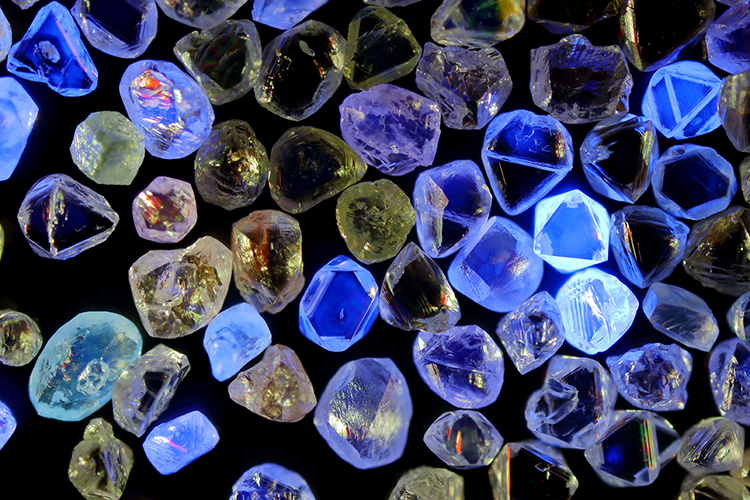
Why you should be thinking about diamond fluorescence and its value to your engagement ring?
When shopping around for an engagement ring, you might be considering your diamond purchase to be an investment- making sure the jewelry piece and the diamond itself holds lasting value over time. That is why you’ll often stumble upon topics beyond the 4Cs. Serious buyers try to optimize all the details for the highest quality diamond.
One big topic you might hear about is diamond fluorescence and whether it’s good or bad. Diamond fluorescence refers to the intensity of the colored glow in a diamond when it is exposed to UV light (like we said, this is deep into the details!). The color most commonly observed is a blue glow, but you may find hues of yellow, white, or red.
The Gemological Institute of America has established five levels of diamond fluorescence measured under special UV light conditions: none, faint, medium, strong and very strong. This means that the grading might not be a good representation of the diamond in natural light, sunlight or other fluorescent lights.
Here are a few questions that will help you decide if diamond fluorescence is an important factor in your diamond shopping.
Particularly with diamonds with faint or no fluorescence, there is no effect on the natural appearance of the diamond. Diamonds with higher fluorescence may have a much more noticeable glow in sunlight so you generally want to consider low amounts of fluorescence. Fluorescence has no effect on the appearance or transparency to the naked eye unless you find yourself exposed to UV lights often (nightlife lights, UV lights used for gel manicures, etc.)
As we mentioned earlier, the fluorescence is visible under UV light. A diamond with strong or very strong levels of fluorescence can appear to have a cloudy or milky appearance which can be perceived as being undesirable in a white diamond, particularly diamonds with a D color grade.
In other scenarios, medium or strong blue fluorescence can mask a yellow colored diamond meaning that a diamond in a lower color range may appear whiter and brighter under UV light (including the sun!), which can theoretically be a good thing.
More fluorescence will typically reduce the price and value of a diamond. If you love the look that the phenomenon of fluorescence gives, that might be great news for you! When it has little effect on the look of the diamond- you can use that to your advantage to get a quality diamond at a budget you are comfortable with.
If you are looking at the long term value of the diamond, you may be more concerned about the level as the resale possibility is lower with high fluorescence gradings. We typically always recommend a diamond with no or faint fluorescence if you want your diamond to look consistent in all lighting conditions.
Lab grown diamond fluorescence is caused by submicroscopic structures within the crystal. The grading of fluorescence on its own and the way it is observed by the naked eye is the same among lab grown and natural diamonds.
To summarize our buying tips:
- If the look is what you care about most, one should truly only be concerned with a fluorescent diamond if it looks milky or hazy.
- Medium fluorescence is great for stones lower on the color scale because it can make your stone look whiter.
- At a color grade of G or higher, the diamond should have faint or no fluorescence.
- Always observe your diamond with your personal preferences in mind. If you love the value or how it looks, that is worth the most!
To learn more about diamond grading and choose the perfect stone for you, visit our San Francisco showroom or call one of our experts today!






















